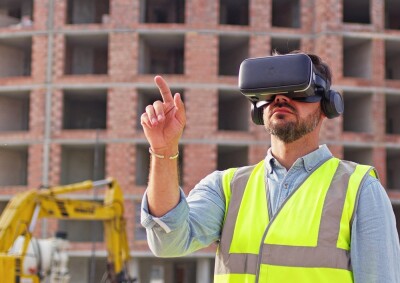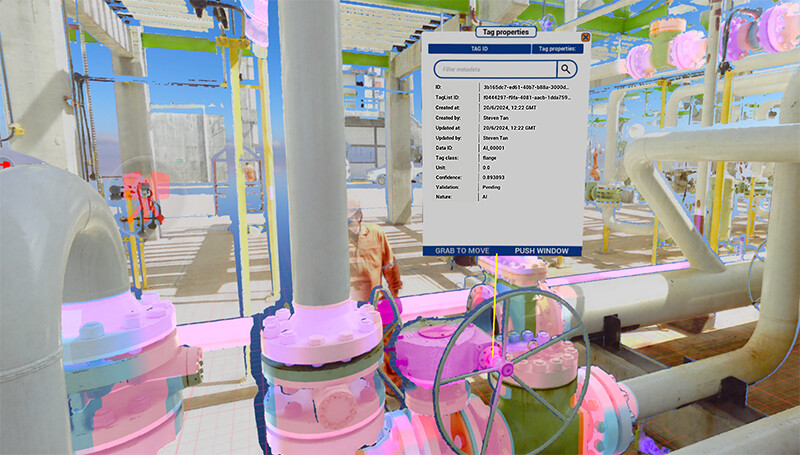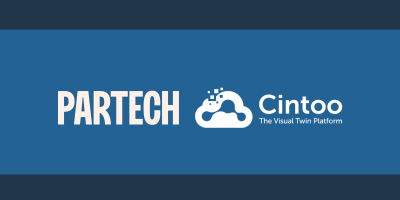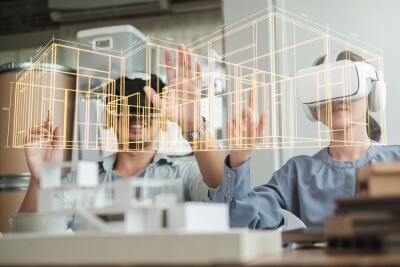More than any other point, companies in industries like AEC, manufacturing, and energy have been utilizing 3D-based technologies to better plan their projects and operate their facilities. Some of this is because of improved hardware, of course, but software has been just as important, with new options providing better streaming capabilities of these massive files to enable better decision-making and collaboration.
Cintoo has been one of the companies at the forefront of this movement, providing a way for simple streaming of massive point clouds and meshes, bringing that reality capture data to life and offering an ability to stream and collaborate within these models using a web-based application. Recently, the company announced their latest offering, Cintoo Metaverse, which allows users to navigate their scans within virtual reality environments running on the Unreal Engine. They’ve also introduced new Cintoo Streaming SDKs for developers to create their own applications, which interested parties can inquire about here.
Recently, Geo Week News spoke with Cintoo CEO Dominique Pouliquen about the release and how he sees this kind of offering as the future of this space.
Unsurprisingly given the company’s long-time presence in the streaming and navigation of complex 3D scans of projects and facilities, the idea of leveraging VR is not exactly a new one for them, with Pouliquen stating that they’ve been thinking about VR “from day one.” For a long time, the only way to stream these huge and dense point clouds was over the web, and in fact they had already offered a web-based VR product within Cintoo. However, he notes that it wasn’t particularly easy to use, as users needed to use Firefox and needed to have a VR laptop.

More recently, web-based VR is “kind of being abandoned,” according to Pouliquen, so Cintoo needed to figure out how to best leverage this technology that would so obviously benefit their customers. He tells Geo Week News that they have been working with Epic Games via a MegaGrant they received three years ago, but they needed to figure out how to navigate through the scan in a way that made sense for the user.
They solved this by looking toward the video game industry, something that Pouliquen brought up multiple times in our conversation. It’s not a new concept, either, as we’ve covered in the past how big of an impact Pokémon Go had on many founders in the AR-based AEC solution space. For Cintoo, it was more about how the video game industry is making their VR games more usable for the end customers.
“We started thinking about another way to navigate your space,” Pouliquen told Geo Week News. “And I look at the video game industry very closely. The best VR games in which you are not getting dizzy are the ones where you teleport yourself. You teleport, then you look around, then you teleport, and you look around and you do something. People that fly over, like a bird’s eye view, they jump into a wall, they start to get dizzy. The only way to really navigate a space is, say, some kind of Google Street View experience.”
For Cintoo, this ties directly back to a new feature they announced early in 2024 in which users could more easily jump around their scans on Cintoo’s web-app in exactly the way he described. As it turns out, this is what has been able to unlock a better and more palatable VR experience.
In terms of who those end users are, Pouliquen points to three main segments that make up the majority of Cintoo’s user base. The first is construction, particularly those professionals who are working with BIM models. He says that those users are interested in VR to be able to work collaboratively around these models, detecting potential issues in an immersive fashion.
He also talks about the manufacturing industry, and particularly those in the automotive sector who are leaders among manufacturing in terms of utilizing reality capture data. Pouliquen mentions that when these companies are looking to change the layouts of their equipment or add new equipment into their facilities, they want to use a 3D scan of the facility to test out these potential changes. In VR, they can collaboratively and immersively detect potential issues and clashes with their new designs.

And finally, Pouliquen mentions a lot of similar use cases for the oil and gas industry, which is often working with complex facilities with lots of crowded spaces. Any changes need to be planned extensively, which is easier to do in this immersive environment. Additionally, he mentions the potential for safety training using a VR environment as well.
This is another sign that the AEC and other industries are embracing virtual reality in a way that wasn’t necessarily true even a half-decade ago. Part of this is improvements in headset hardware, to be sure, but we’re also seeing better applications and offerings for those in the industry, including the aforementioned ability to “teleport” through a scan in a way that isn’t disorienting for the user.
Pouliquen sees this greater acceptance around VR and, more broadly, the “industrial metaverse” as well. He says that he has been talking about VR for about 30 years at this point, so it’s not exactly new, but graphic improvements over the last four or five years have accelerated adoption.
“We don’t want to be confused with the social media aspect of [the metaverse], and we don’t want to be confused with video games, either,” Pouliquen said. “But I feel that we need to and can learn a lot from the video game experience, which we did with this teleport feature. But yes, there’s still room for big potential with industrial metaverse applications.”
Given the big push from Meta, formerly Facebook, around the more commercial-based “metaverse” that never quite came to fruition, it’s reasonable to wonder if there’s any concern from those investing in the industrial side to be associated with a concept that frankly comes with plenty of negative connotation. Pouliquen doesn’t see that issue with the initial users, but has a bigger vision for who Cintoo Metaverse – and the enterprise VR space more broadly – should serve.
“Our business is very technical, with people who know about laser scanning. They know the difference between industrial metaverse and ‘metaverse,’ the social media aspect of it. We’re facing a very technical community now. I would say, though, the goal we have is to bring this technology not only to the experts, but to people in the field who are not necessarily experts.”







